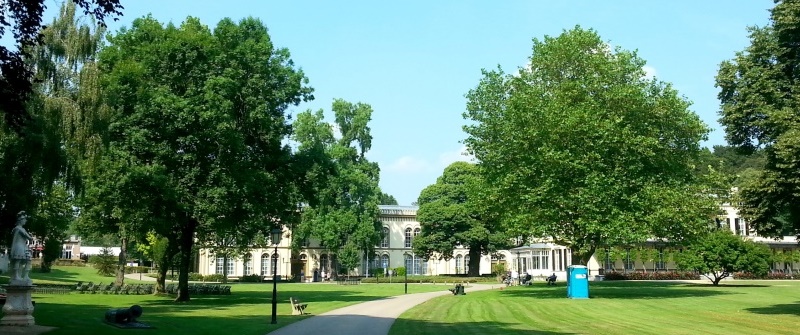
28 Aug The trees of Bronbeek (blog by Christiaan Harinck)
‘The past is a foreign country: they do things differently there’ wrote L. P. Hartley. Hidden in a park on the outskirts of Arnhem lies such a country, Bronbeek. Being both monument, veterans’ retirement home and colonial museum, it is a beautifully curious place. The museum today is a modern one with a nuanced exposition. Few of the current inhabitants served with the colonial army; one of the last remaining turned 100 this August. Yet the past is still omnipresent in Bronbeek. Its monuments and walls whisper tales of a colonial time that is no more. In its Indonesian restaurant one can even taste the past. Some call Bronbeek the last ‘Indisch’ refuge; visitors of mixed Dutch and Indonesian heritage try to grasp the lost world of their ancestors.
On the sun-drenched terrace of the ‘Kumpulan’ restaurant I meet eight veterans who are gathered here to remember and celebrate their shared past. In many ways they are typical of the veterans of 1945-1949: old men who speak a distinct Dutch riddled with military jargon and Indonesian words. And of course they will end their reunion with a copious ’rijsttafel’-meal. But atypically, what connects this particular group of men is not their military unit but rather the University and Student Corps of Leiden. This makes for a very interesting combination. Tales of their military service are interrupted and enhanced with jokes and stories from their student days. Each year, an academic is invited to enliven the reunion with a lecture on the decolonization of Indonesia. Today it is my turn.
The veterans listen attentively, but it is clear they are struggling with something. Since our meeting takes place in the week of 17 August, Indonesian independence Day, the Dutch newspapers and other media have been abuzz with ‘news’ on Dutch war crimes and upcoming publications by Remy Limpach and Gert Oostindie, who conclude that the use of excessive violence was structural. This clearly unsettles the veterans. Although they differ in opinion on this matter, they all share a feeling of being ignored or at least gently put aside. ‘Who will hear our views?’
Most of them do not accept the notion that the war crimes were a structural part of the conflict they took part in. A conflict which was far from one-sided. ‘There was a lot of reactionary violence, on both sides.’ Another tries to explain: ‘There were two kinds of violence: the one used in regular combat – ugly but justified – and violence ignited by the thirst for revenge. That usually happened later.’ Because of this dichotomy, the veterans have trouble considering war crimes as something structural. By their very nature, these acts of revenge are outside of normal practice and perpetrated by individuals. As men who for a large part were officers during the war, they naturally linger on the responsibilities of the officer. ‘The use of violence inevitably invites misuse of it. It always happens.’ To prevent this misuse and restrain the feelings of revenge, good officers are needed. ‘There are no bad soldiers, only bad officers’ one of the veterans states with an air of authority.
Once this group of veterans counted 50 members. Those days are gone. Times moves on, and they know it. A few years ago they left their stories for posterity when interviewed by Stef Scagliola. Now they carry on, until they all disappear in the mist of time. ‘You know what they say mister Harinck: old soldiers never die, they just fade away.’ I leave Bronbreek through the lush park that surrounds it. The fields are littered with monuments, partly shaded by stout old trees. Their shade once offered relief to the retired conquerors of Atjeh. Today they shade veterans of more recent conflicts, men at the colliding nexus of past and present. Let us hear their stories and opinions. Let them explain why they disagree. For soon the trees of Bronbeek will cast their shadows on empty fields alone.




No Comments